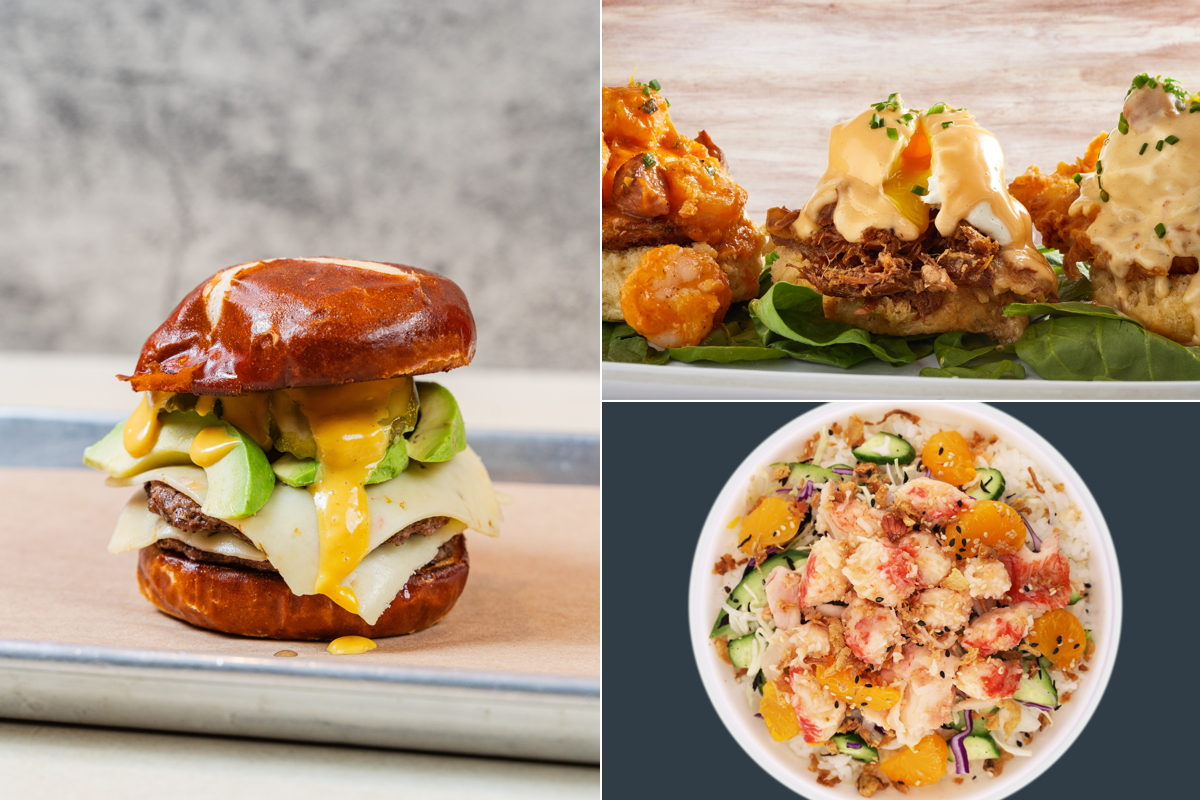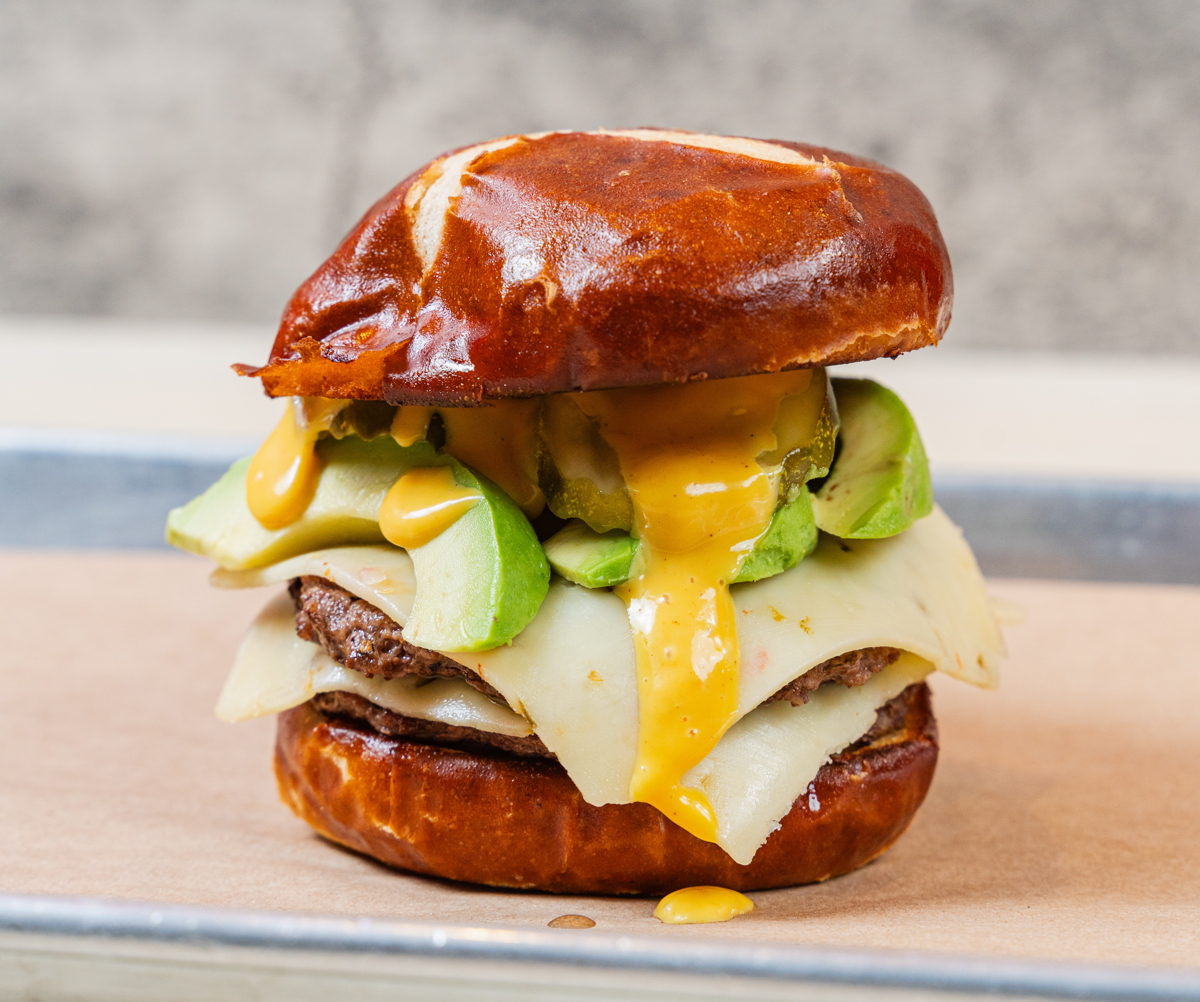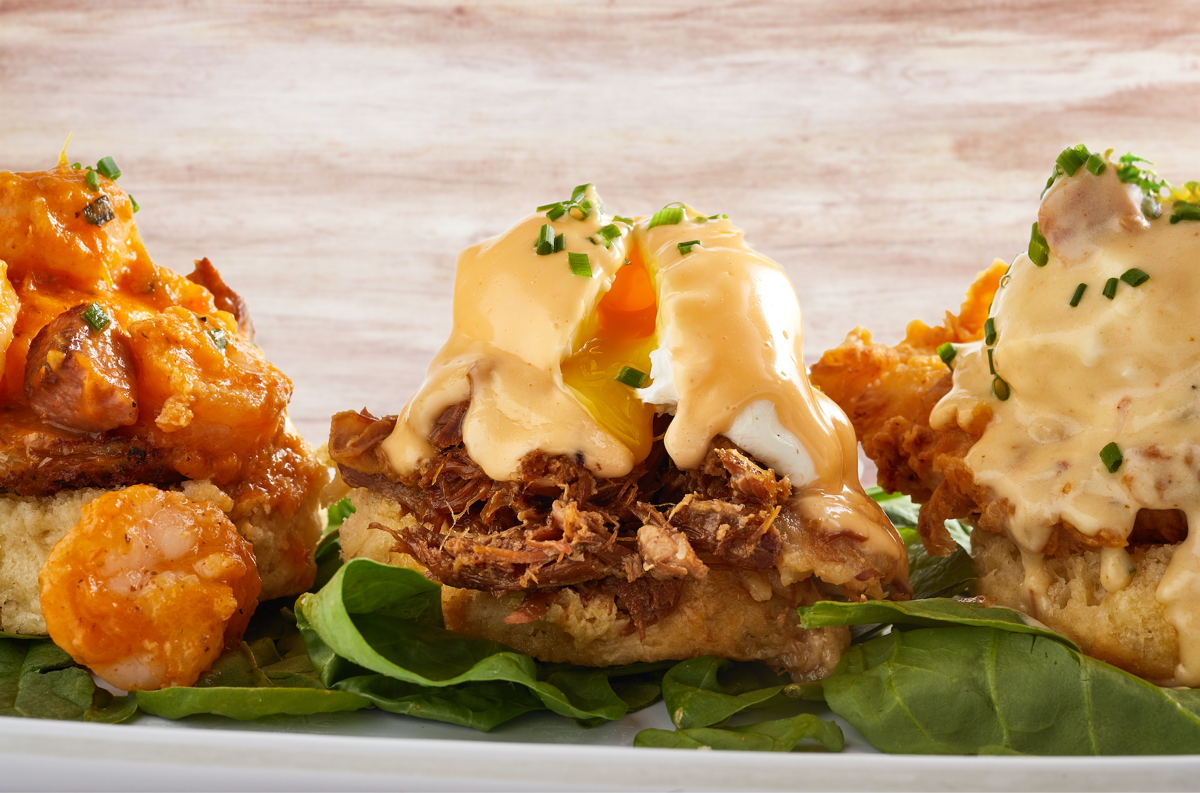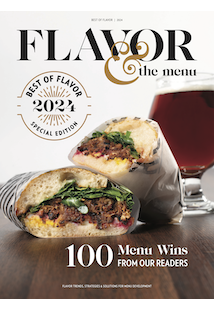
How Sauces Make the Dish
The accent ingredient that yields high flavor returns
How Sauces Make the Dish
The accent ingredient that yields high flavor returns
By Patricia Fitzgerald and Nicole Duncan
September 16, 2024
By Patricia Fitzgerald and Nicole Duncan
September 16, 2024
In terms of culinary bang for your buck, sauces are a tough ingredient to beat. Just a little bit can go a long way in dialing up existing flavors, introducing complementary notes or tying together seemingly disparate elements. And because sauce compositions run the gamut, so too do the taste, mouthfeel and appearance; they can be vinegary and tart, sweet and spicy, unctuous and savory, herbaceous and bright.
Sauces don’t adhere to any daypart, category or cuisine; they are as much at home atop a savory breakfast as they are tossed into a seafood bowl or drizzled on a burger, as the following Best of Flavor dishes demonstrate. Each boasts a unique flavor profile on its own, but the addition of high-impact sauces differentiates it from the rest.

Honey mustard introduces sweet tang into Hat Creek Burger Company’s Pretzel Jack, while also dialing up its visual appeal.
Sometimes sauces are tucked into burger builds, not taking up too much real estate lest they distract from other components—whether in flavor, presentation or both. But at Texas fast-casual chain Hat Creek Burger Company, the sauce receives all the attention it rightfully deserves in the fan favorite Pretzel Jack.
Although only a “drizzle,” the honey mustard brings sweet, tangy notes to an ultra-savory burger. Serving it so the sauce oozes down the side not only makes for a colorful presentation but also ensures its flavor touches both halves of the pretzel bun and every ingredient in between: twin beef patties, pepper Jack cheese, avocado slices and pickles—the last of which complements the sauce’s tangy notes.
“Joined with the spicy kick of pepper Jack cheese, the creamy avocado base and the sweet tang of honey mustard and pickles, the burger delivers the perfect balance of salty and sweet,” says Drew Gressett, president of Hat Creek Burger Company. “It offers a symphony of flavors and textures.”

At Ruby Slipper, the Trifecta features a trio of Benedicts and sauces: Creole tomato sauce in the Bayou Shrimp Benedict (left), hollandaise in the Eggs Cochon (center) and tasso-cream in the Chicken St. Charles (right).
As with burgers, sauces are a major flavor builder in eggs Benedict—to the point that hollandaise is all but de rigueur in the popular breakfast dish. New Orleans-based Ruby Slipper honors the culinary tradition but also pushes the envelope. The restaurant’s Trifecta comprises three variations of the Benedict, served atop a buttermilk biscuit. “Each offers a unique culinary journey that captures the essence of Southern comfort,” says Marla Chua, culinary operations partner at Ruby Slipper Restaurant Group.
The Eggs Cochon Benedict substitutes slow-cooked, apple-braised pork in place of Canadian bacon but sticks with the classic flavor profile, keeping the classic hollandaise atop the poached egg. By contrast, the Bayou Shrimp Benedict creates an entirely new build, with sautéed Gulf shrimp, pork tasso, a poached egg and fried green tomato; Creole tomato sauce imparts a final kick of spice. Finally, the Chicken St. Charles stars a crispy fried chicken breast with a poached egg but swaps the hollandaise for a signature tasso-cream sauce for extra umami.

Pokeworks’ Lobster Surimi is already chock-full of flavor, but guests fine-tune the tasting notes by adding additional ingredients and topping it all with their choice of sauce.
Sauces routinely punch above their weight in terms of flavor impact, which makes them a darling SKU at build-your-own concepts. Perhaps more than any other BYO ingredient, sauces can flip the flavor profile of a bowl, salad or other guest-constructed dish. This logic holds even as the builds themselves become increasingly upscale.
Such is the case at California-based Pokeworks, where the protein options include Lobster Surimi. “Guests do not associate such a premium product with the punchy flavors of poke,” says Mike Wu, co-founder and head of culinary. “It’s a delectable fusion of flavors with a light-calorie and low-fat profile. The sweetness of surimi is mixed with rich, savory lobster to create a fresh, new twist.”
Although this lobster preparation already boasts plenty of flavor, guests can layer in even more nuance with other ingredients, including sauces. Sriracha Aïoli imbues a creamy mouthfeel but with a bit of heat; the Sweet Chile Gochujang adds sweet heat and enhances the umami notes; and the Ponzu Fresh brightens the overall dish with citrus and soy sauce.
This varied selection demonstrates the potential of sauces to transform any number of dishes. Menu developers can curate builds featuring a specific sauce or invite guests to choose their own dining adventure. Either way, the seemingly minor component is guaranteed to yield big flavor and set a dish apart from the pack.







